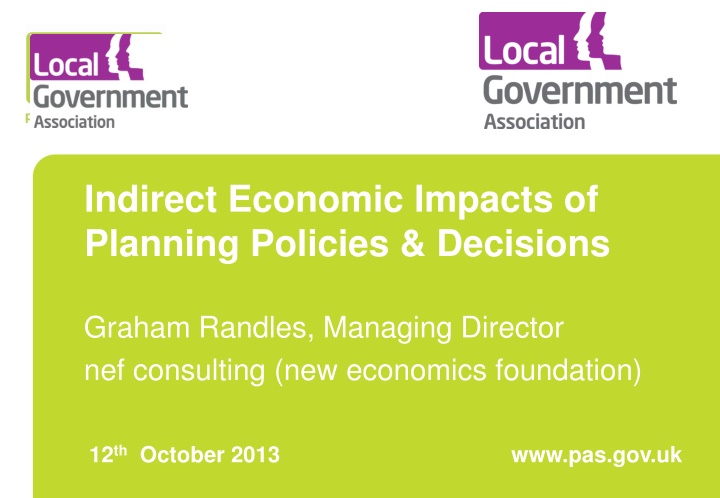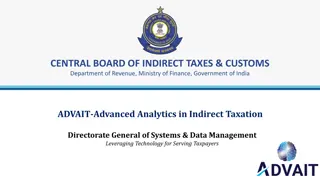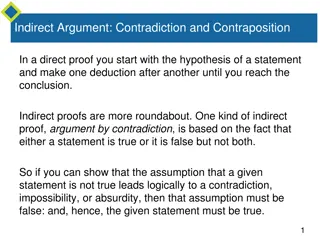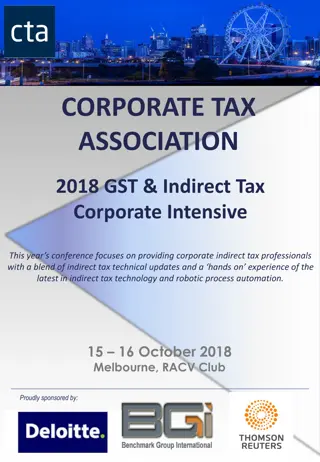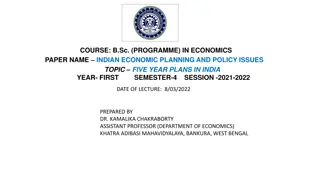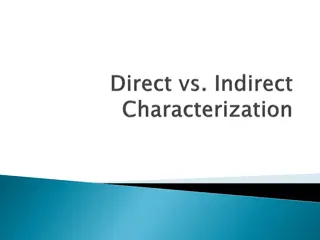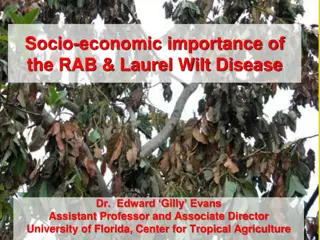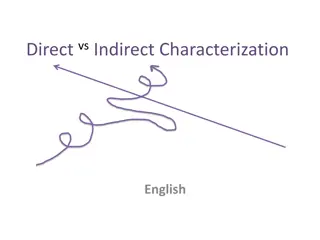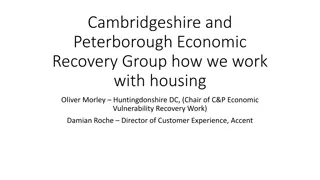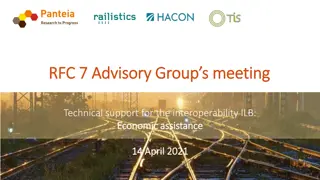Indirect Economic Impacts OF Planning Policies & Decisions
Explore the indirect economic impacts of planning policies and decisions as presented by Graham Randles, Managing Director of nef consulting. Learn about the new economics foundation (nef) and their tools for demonstrating organizational impact. Discover the measurement challenges and the value of Social Return on Investment (SROI) developed by nef. Gain insights into the economic contributions of entities like the John Lewis Partnership to local economies.
Download Presentation

Please find below an Image/Link to download the presentation.
The content on the website is provided AS IS for your information and personal use only. It may not be sold, licensed, or shared on other websites without obtaining consent from the author.If you encounter any issues during the download, it is possible that the publisher has removed the file from their server.
You are allowed to download the files provided on this website for personal or commercial use, subject to the condition that they are used lawfully. All files are the property of their respective owners.
The content on the website is provided AS IS for your information and personal use only. It may not be sold, licensed, or shared on other websites without obtaining consent from the author.
E N D
Presentation Transcript
Indirect Economic Impacts of Planning Policies & Decisions Graham Randles, Managing Director nef consulting (new economics foundation) 12th October 2013 www.pas.gov.uk
Introduction nef (new economics foundation) Founded in 1986 Economics think-tank working to promote high well-being, environmental sustainability and social justice nef consulting uses nef s methodological tools to help organisations demonstrate their impact Clients include: London Borough of Camden; Milton Keynes Council; Bridgend County Borough Council; The Crown Estate
Introduction The big picture
Introduction The big picture
Introduction The policy framework
Introduction The challenge for councils: more
Introduction The challenge for councils: less
new economics foundation Valuing what matters nef developed Social Return on Investment (SROI) in 2003 Applied to criminal justice, looked-after children, advice services, equal pay, infrastructure investments etc since 2004 2009 Cabinet Office funded the mainstreaming of SROI nef wrote the Guide; nef consulting is the leading practitioner 2010 CLG Valuing the Benefits of Regeneration
John Lewis Partnership (2011) Our social & economic contribution Average John Lewis shop contributes 9.1m and average Waitrose contributes 1.7m to local economy Annual profit-sharing results in 40-50 million into local economies In Leicester 32% of Partner wages spent in the city centre
British Land (2012) Our Socio-Economic Contributions
Economic value of developments British Land
The Crown Estate (2013) Our Contribution
The Crown Estate Total contribution economics ECONOMIC SOCIAL ENVIRONMENTAL DIRECT INDIRECT ENABLED
The Crown Estate Total contribution economics Glenlivet Estate 23,000 ha. 30,000 visitors p.a. Spend 1.6m a year c. 0.9 m added value Ormonde Wind Farm 835 people employed in construction 40 operating staff, two thirds are local
New approaches to measurement Social Return On Investment (SROI) Well-being economics Environmental economics Local economic multiplier (LM3) Origins in local economic development Applications in commissioning, procurement
Social Return On Investment An outcomes based approach A way of understanding how effectively money is spent It considers investments and triple-bottom-line benefits (economic, social, environmental) SROI = [Net value of benefits] [Investment] Measures change that matters to stakeholders Can be used to evaluate or forecast outcomes
Core concepts Value market and non-market outcomes in common currency Additionality Net Benefits Displacement Research, assumptions and proxies Transparency Consultation
Social Return On Investment Other examples of use Central Government Department of Health National Audit Office: VfM DFID: VfM Business and CSR Local authorities Third Sector
Example: Public Services (Social Value) Act 2012 The authority must consider (a) how what is proposed to be procured might improve the economic, social and environmental well-being of the relevant area, and (b) how, in conducting the process of procurement, it might act with a view to securing that improvement. Example Kirklees Council: considered within 60% quality criteria
Measuring local economic value The local context
Measuring the economic value What can we measure? Worklessness, skills and business development Industrial and commercial property and infrastructure Homes, communities and environment
Measuring the economic value in more detail Worklessness, skills and business development Worklessness, skills and training Enterprise and business development
Measuring the economic value in more detail Industrial and commercial property and infrastructure Industrial and commercial property Infrastructure
Measuring the economic value in more detail Homes, communities and environment Housing growth and improvement Community development Environmental improvement Neighbourhood renewal
Social Return on Investment Impact map
LM3 (Local Multiplier 3) The local economic multiplier Tourists Welfare benefit Business investors Export earnings
LM3 (Local Multiplier 3) The local economic multiplier Purpose: to measure the impact of spending locally Can be applied at local (self-defined) and regional level measures how money is spent and re-spent locally to 3 rounds of spending to determine local economic impact can be applied to local authorities, businesses, projects, planning
LM3 examples Bridgend County Borough Council Valuing The Local Economy project Housing retrofit - value of re-spending locally Local works value: 7,035,082 Local contractors: 6,538,462 (initial spending) Non-local : 496,620 Average spending within a 50 mile radius: 93%
Indicative economic impacts of housing development Proposed new build of high value residential homes looking at the impact of: Capital investment of 96.0 m (not including land value) Projected annual spending by income band of occupiers of the completed scheme SUMMARY Revenue Source (for economy) m Gross Income m Additional Impact Total ( m) Multiple per Full Time Equivalent Jobs 672 21 62 145 Capital Expenditure Band A income 37,500 Band B income 100,000 Band C income 187,000 96 3 8.9 119.76 3.59 9.79 20.96 215.76 6.59 18.69 41.72 2.25 2.2 2.1 2.01 20.76
LM3 examples Norfolk district council Sea wall (local) Car park (non-local) Round 1 Round 2 Round 3 72,000 57,600 24,980 120,000 20,400 6,760 Total 154,580 147,160 LM3 2.15 1.23
LM3 examples Wind farm development - Scotland For every 1 invested in civil and electrical contracts, an additional 52p was re- spent in the local economy through the supply chain in three rounds. Each 1 of investment resulted in 71p of additional spending in all three rounds in Scotland as a whole.
New approaches to measurement Guidance available
New approaches to measurement Interactive exercise Local economic impacts Well-being economics Environmental economics Illustrated by: New jobs Spending by new residents Well-being value of open spaces Congestion costs Pollution, health and crime costs
Sign up to our newsletter Become a peer ! Change the world ! email pas@local.gov.uk web www.pas.gov.uk phone 020 7664 3000
